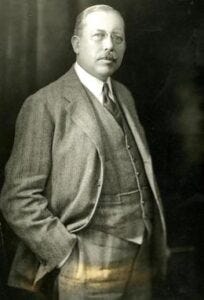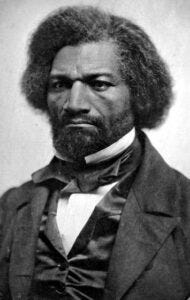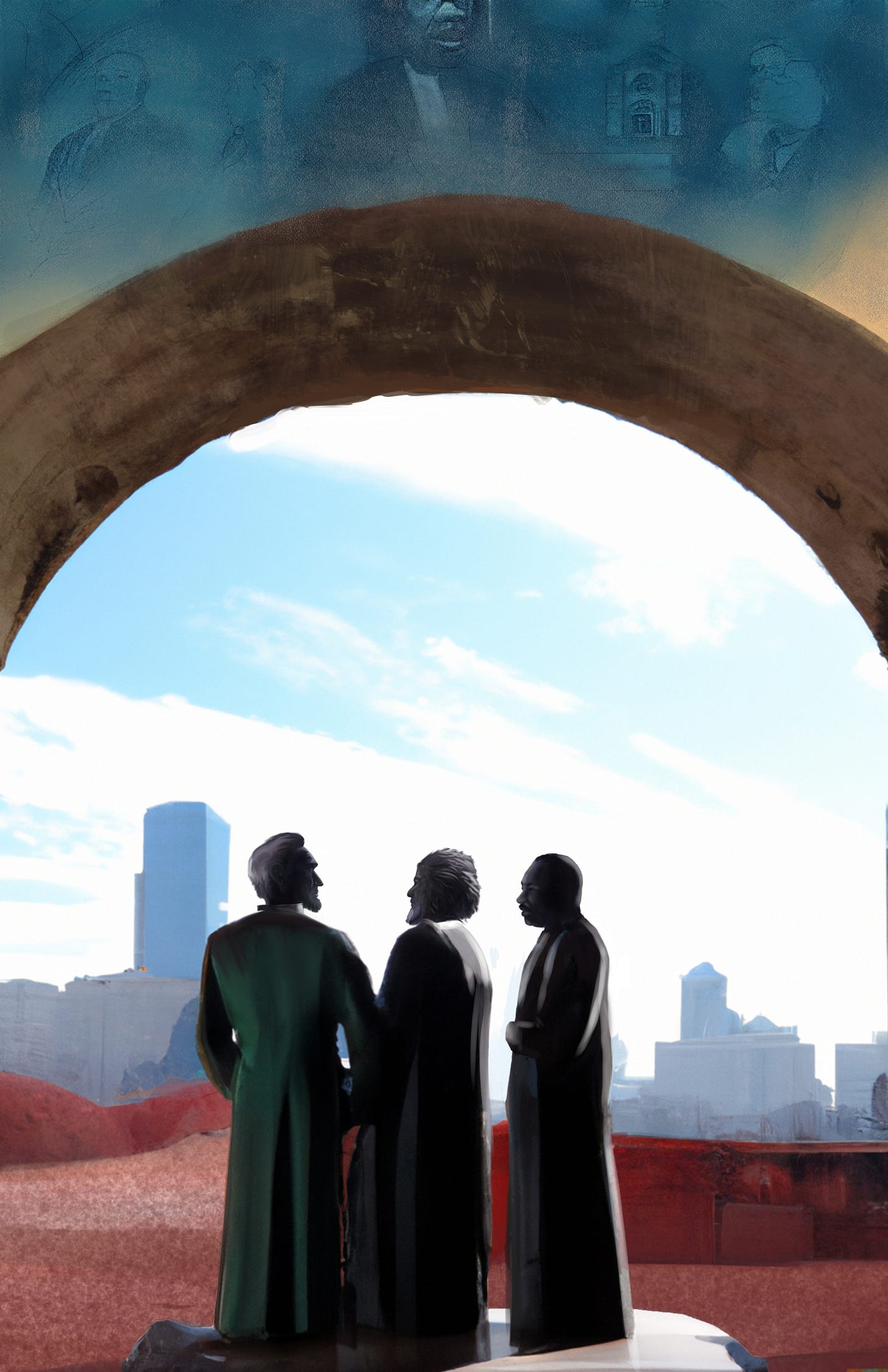Dreaming Our Way Toward Redemption
The American Dream gives our country the ultimate redemption arc
In his 1931 book, “The Epic of America,” James Truslow Adams wrote that the American Dream “is not a dream of motor cars and high wages merely, but a dream of a social order in which each man and each woman shall be able to attain to the fullest stature of which they are innately capable, and be recognized by others for what they are, regardless of the fortuitous circumstances of birth or position.” These words may have been written nearly a century ago, but they’re as relevant and meaningful as ever in my eyes. When I arrived to the United States from Latin America a few years ago to pursue a graduate degree, I became enamored with the American Dream: its celebration of success and achievement, striving and overcoming.
This view is one that not everyone shares, of course. America is certainly a country with flaws. We have not always lived up to our ideals. We are a fallible people. But what the American Dream gives us is perhaps the ultimate redemption arc.
Many treat the Dream as a static, unfulfilled promise that makes the country irredeemable. But it represents anything but stasis: At its very core, it is about moving forward, striving onward and upward. From the immigrant able to give a better life to her kids, to the entrepreneur coming up with the next unicorn company, to the community organizer seeing a better future for others by fighting for a broader array of civil rights, there are countless stories of the American Dream achieved. Every day, there are millions of us working to surmount hurdles—both personal hurdles and those erected by the sins of our collective past. And thanks to the American Dream, we have the opportunity to jump over these barriers and clear them for future generations. What could be more redemptive than that?
A Continuing Journey
We’re used to seeing redemptive arcs in movies, TV shows and books, and as humans, we love these stories because we see ourselves in them. Redemptive arcs are often used to show that while humans are imperfect—we miss opportunities, take wrong paths and more broadly just make mistakes—we also have the capacity to learn from our mistakes, internalize lessons and change direction.

Redemptive arcs can be about individuals, groups of people or even—as some religions teach—human souls as part of a redemptive arc with God. The United States is uniquely positioned, from a historical perspective, to represent the ultimate redemptive arc when it comes to the story of a nation. That’s where the American Dream comes in: As America’s central vision, it unifies us in our diversity and represents the journey of many people in pursuit of better, richer and fuller lives. It’s a journey that hasn’t been a smooth one.
The promise of all people created equal is what resonates more with our redemptive arc story: It’s a promise that did not fully take hold in America’s early days. The country was founded amid the grave injustice of slavery, and even though it wasn’t the main engine driving the founding of our nation, it represented a stain on the promise of equality for all. Slavery stood in direct opposition to the American Dream, since it kept millions from pursuing the limits of which they were, as James Truslow Adams wrote, “innately capable.” The circumstances of birth and position meant everything.
In that sense, our American story is one of ongoing progress toward redemption—working, for example, to redeem ourselves from the country’s codification and perpetuation of slavery. And as our story has progressed, events have unfolded and leaders have emerged to form our transformative redemptive arc.
America’s Redeemers
Who are some of these main characters in this story? One exemplary character is Frederick Douglass, one of the most exceptional Americans in history. A slave who escaped the horrors of slavery and went on to become an influential orator, abolitionist and a true American original, Douglass endured many of the injustices that characterized the fraught beginnings of our American story but was still hopeful that the American Dream would have its redemptive arc. He longed for America to live up to its promise of equality and said as much in many of his writings. In his autobiography, Douglass details what he had gone through as a slave and the conditions people lived through in that dark period in American history. He focuses on those aspects in his epic 1852 speech, “What to a slave is the fourth of July?” and details many of the inconsistencies and injustices in the American Dream story. However, he starts and ends his speech with hope:
[N]otwithstanding the dark picture I have this day presented of the state of the nation, I do not despair of this country. There are forces in operation, which must inevitably work the downfall of slavery. “The arm of the Lord is not shortened,” and the doom of slavery is certain. I, therefore, leave off where I began, with hope. While drawing encouragement from the Declaration of Independence, the great principles it contains, and the genius of American Institutions, my spirit is also cheered by the obvious tendencies of the age.
Douglass’ life experience could certainly have turned him into a skeptic regarding the promise of America. But instead, he appreciated the fact that the Constitution and the institutions of America could still, if truthfully interpreted, give way to a redemptive ending to the story.
Around the same time as Douglass was writing and speaking, another character in the redemptive arc story of the United States was making an impression: Abraham Lincoln. Lincoln led the country through a period of its history when many of the wrongs were starting to be addressed. In his “Gettysburg Address,” he summarized the redemptive nature of the American Dream and the American people:
we can not dedicate, we can not consecrate, we can not hallow this ground. The brave men, living and dead, who struggled here, have consecrated it, far above our poor power to add or detract. The world will little note, nor long remember what we say here; but it can never forget what they did here. It is for us the living, rather, to be dedicated here to the unfinished work which they who fought here have thus far so nobly advanced. It is rather for us to be here dedicated to that great task remaining before us, that from these honored dead we take increased devotion to that cause for which they gave the last full measure of devotion, that we here highly resolve that these dead shall not have died in vain; that this nation, under God, shall have a new birth of freedom, and that government of the people, by the people, for the people shall not perish from the earth.
As with Douglass’ words, there is a real resilience to Lincoln’s thoughts here. Through those words, Lincoln continued to stress the journey that the American Dream and American ideals of equality represented. It furthered the continued redemptive narrative of the American Dream—and that this journey toward redemption was one worth pursuing even in the face of great hardship and sacrifice.
One hundred years later, Martin Luther King Jr. also professed that his dream was of an America that would redeem itself to the point where the promises of the Declaration of Independence would be achieved for every citizen of the United States. In his iconic “I Have a Dream” speech, he remarked:
When the architects of our republic wrote the magnificent words of the Constitution and the Declaration of Independence, they were signing a promissory note to which every American was to fall heir. This note was a promise that all men—yes, Black men as well as White men—would be guaranteed the unalienable rights of life, liberty, and the pursuit of happiness.
... So even though we face the difficulties of today and tomorrow, I still have a dream. It is a dream deeply rooted in the American Dream. I have a dream that one day this nation will rise up and live out the true meaning of its creed: We hold these truths to be self-evident, that all men are created equal.
Since the respective times of Douglass, Lincoln and Martin Luther King Jr., many milestones have been reached in that particular redemption story. We can include many other characters in the story such as Barack Obama, John Lewis and Tim Scott who, in his latest book, so eloquently put forth the same idea of the redemptive arc.
The story of America doesn’t belong to a particular group. It is our story. And every one of us is given the immense opportunity to add a chapter to that greater story of us. Ours is a story being written even as we breathe. It’s a story of love, redemption, mistakes, courage, anger, trial and error, and learning.
Can we say that the promise of equality and this specific redemptive arc has been achieved? The vast majority of people will not deny a great deal of progress in many respects and a clear redemptive arc, despite some lingering challenges. And this arc continues to move positively forward—with the help of thinkers and doers who embrace the belief that while America may sometimes fail in its adherence to its ideals, those ideals still provide the cornerstone of this country and should be protected at all costs.
In Pursuit of a New Frontier
Our redemption story may not be over yet, but momentous progress has been made, and maybe in the context of a nation, a redemptive arc is never fully achieved as there is always room for improvement—and even more so for a country as young as the United States, which is only turning 250 years old at the middle of this decade. Furthermore, it’s important to remember that as soon as we internalize a final victory, we can become complacent. But this amazing dream is still an ongoing experiment that we need to cherish and build on.

Do our current politics take us there? Given the polarizing nature of our current politics, the most likely answer is no. But the American project was never about politics; it was about the ideals of flourishing and freedom. And those are clearly the fundamental pillars of the American Dream. We got to where we are in spite of politics, not because of them, and we will do it again and continue improving.
The American Dream presupposes the value of many things: meaning, freedom, aim, aspiration, agency, persistence. The Dream makes the difference between having an American society that is dynamic and vision-oriented, that thinks of itself as capable of solving any problem, as opposed to one where people look mostly for security above all else, leaving aside the things that made it great and instead becoming static, decadent and doomed to fail.
The Dream—and the dynamism it represents—has significance on many levels, in terms of self-help and overcoming one’s own barriers, and in laying the groundwork for others to do the same. A classic example is Madam C.J. Walker’s success as an entrepreneur, which enabled many other Black women to follow in her footsteps, and many other American originals who have faced what seemed like insurmountable barriers on their way to success they achieved in spite of those challenges.
Throughout the history of the United States, the concept of “the frontier” has been representative of that more risk-taking, optimistic and energetic spirit. The frontier was always the promise of a better, richer and fuller life. Ever since the geographic frontier of the United States was settled, the new frontier associated with the spirit of the American Dream has been precisely the spirit of progress, innovation and self-improvement that has characterized the country in its pursuit of more material wealth, increased standards of living and more meaningful lives. It’s the frontier that pushes for more innovation in a wide array of industries that American companies lead. It’s also the frontier for safeguarding civil and human rights at a time when many other countries can’t even dream of the freedom to be as self-critical and ever-improving.
In this way, our commitment to the American Dream is perhaps more important than ever. We are not a perfect nation, but the American Dream reminds us that we must always be pursuing the morally good and right. In short, our dedication to the American Dream is what puts our redemption in reach.




